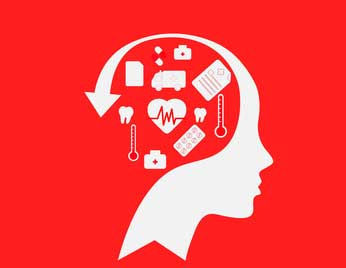
Often, where there’s addiction, there’s an underlying cause. Some people become addicted to drugs or alcohol because of their parents or the home the grew up in. Others are simply at the wrong place at the wrong time and have a lapse of judgment that changes their entire life. Other times, untreated mental disorders correlate to drug and alcohol addiction.
Centers like Nexus Recovery treat this dual diagnosis. Some of the common mental disorders associated with addiction include anxiety, depression, bipolar disorder, trauma, ADHD, and other psychiatric disorders. It’s tricky to identify if the disorder came after the initial use of drugs or alcohol or if it played a role in why the person started using in the first place. Either way, it’s important that both the addiction and the mental disorder are treated with the same care and diligence. People have the best chance of recovery when the addiction and the underlying cause are treated. If the person goes back to their normal lives clean, but still suffering from an untreated mental health problem, there is a great chance of relapsing.
When new clients enter treatment facilities with the goal of leaving clean from addition, health professionals should assess the patient for any mental health issues that could get in the way of recovery. At Nexus, a team or physicians and therapists do just that. Some of the methods that Nexus uses to treat dual diagnosis include:
- Cognitive behavioral therapy
- Motivational enhancement therapy
- Multidimensional family therapy
- Psychodynamic therapy
- Dialectical behavioral therapy
- Gestalt therapy
- Eye movement desensitization and reprocessing
- Rational emotive behavior therapy
- Art therapy
- Surf therapy
- Music therapy
- Yoga
- Meditation and mindfulness
Below are the less obvious treatments described in laymen’s terms.
Cognitive behavioral therapy: a psychological treatment that has been effective in treating disorders like depression, anxiety, addiction, eating disorders, and other mental illnesses. The goal of the therapy is to change thinking patterns by using problem solving skills to better cope with difficulties and develop confidence in oneself. The psychotherapy approach looks to help the patient face their fears and learn to calm themselves in moments of distress, along with many other ways in which the therapy can improve the quality of life.
Psychodynamic therapy: the goal of this form of therapy is for the therapist to gain insight on the patient’s life and their current problems. The therapist will evaluate patterns that may have developed over time. Many therapists will attempt to access the unconscious in order to bring about painful feelings, memories, or experiences that could be the root of the problem. Once the true problems have resurfaced, the patient can be treated accordingly.
Dialectical behavioral therapy: The functions of the therapy are to enhance the clients’ capabilities, improve clients’ motivation, assure generalization to the clients’ natural environment, structure the environment, and enhance the therapists’ capabilities and support their motivation. The way this could take place is through individual therapy, in-the-moment coaching, or even case management. Ideally, the client will be able to live a life that they feel is worthy once the therapy is complete.
Gestalt therapy: This approach helps clients to understand the reality of situations rather than what they perceive to be happening based on their previous experiences. This approach may require clients to re-enact their past experiences and become more aware of how to stop negative thought patterns.
Eye movement desensitization and reprocessing: This form of psychotherapy helps people overcome emotional distress that are a result of previous bad life experiences. The goal of this therapy is to understand and overcome the life experiences that are causing the client pain. This treatment comes in phases with a final phase of examining the progress made throughout the other stages.
Rational emotive behavior therapy: This is a cognitive-behavioral approach that focuses on changing the patients’ irrational beliefs. The therapy includes identifying the underlying irrational thought patterns and beliefs, challenging the irrational beliefs, gaining insight about the irrational thought patterns, and then treating with other tools.
